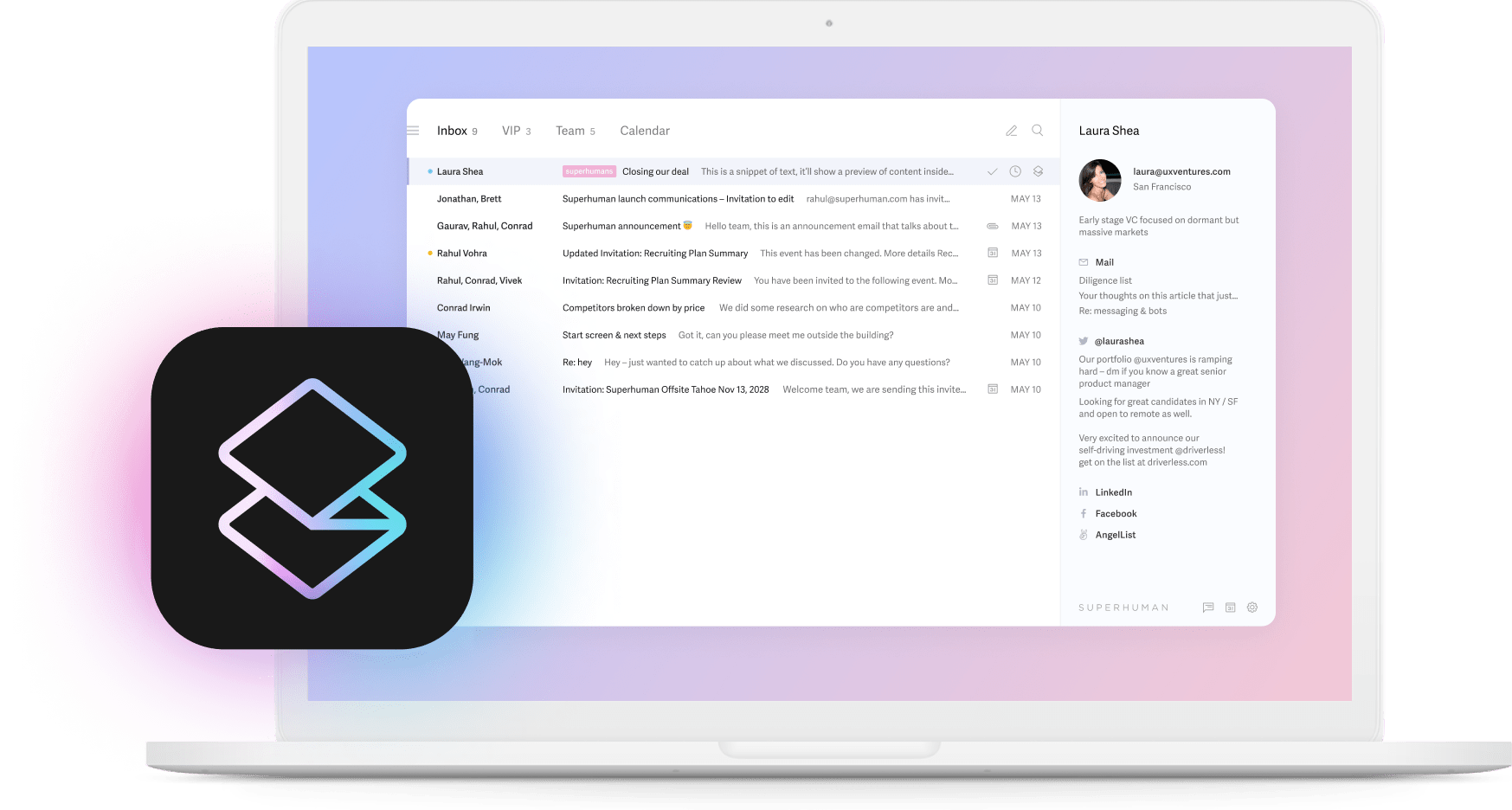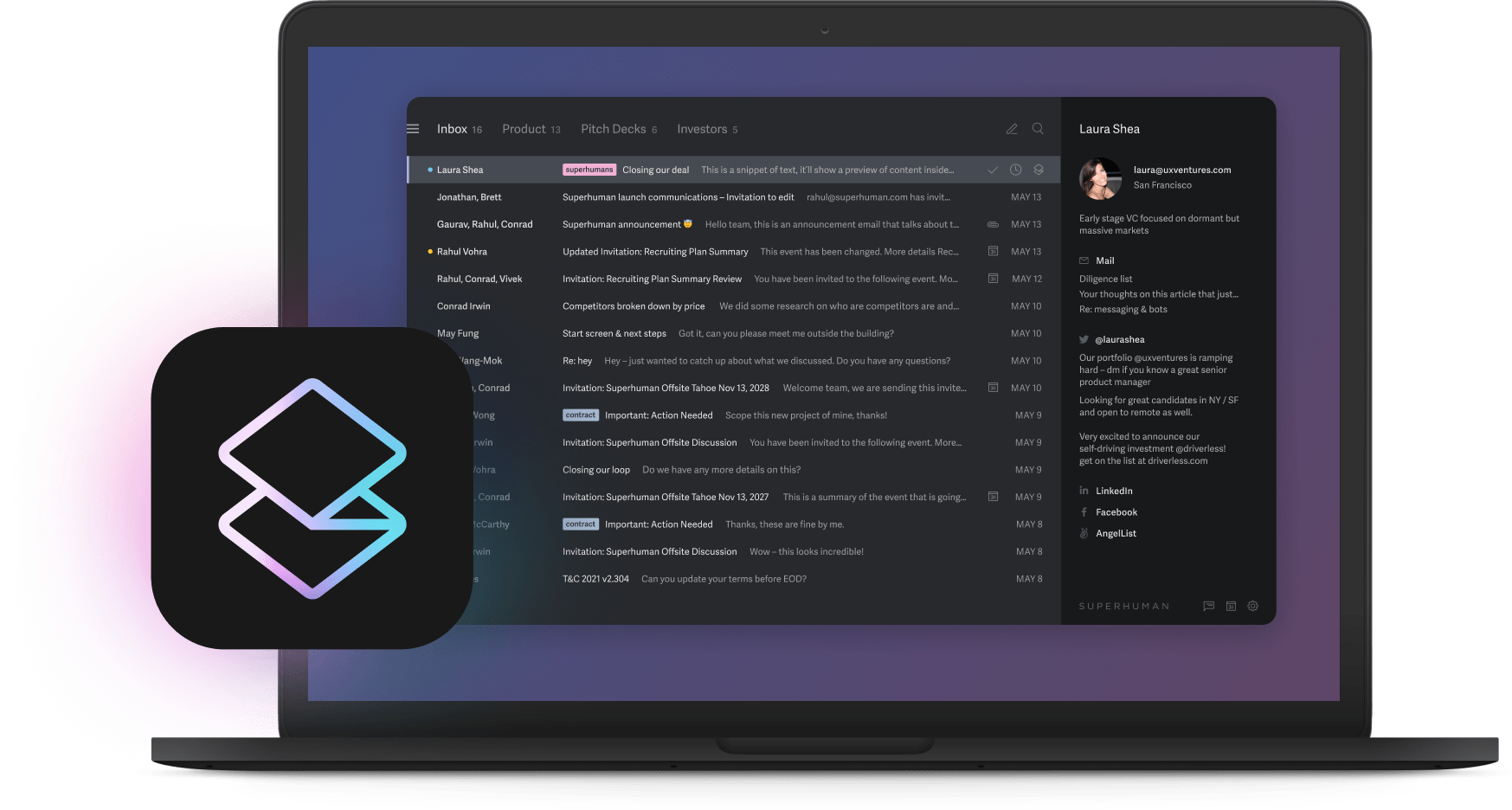
Monday. You wake up and eat a nutritious spread complete with coffee, eggs, yogurt, and fresh fruit. You have back-to-back meetings until noon and at each one, you're asked to complete an action item or a follow up. Your afternoon flies by as you move from task to task, surprised when 5 PM comes and it's time to call it a day. You still have more you could do, so you think about doing a bit more work after dinner.
Tuesday. You wake up, eat a quick piece of toast, and settle in to work from home. You have a morning meeting, but after looking at the agenda, you realize you can delegate it to another colleague, which frees up your morning for some serious deep work. By lunchtime, you've completed several steps toward a long-term goal. After a break, you dive back into work. Your previously calendar blocked your afternoon, so you finish a series of tasks, then spend the last part of the day making a plan for tomorrow's workload. You're done before 5 PM and spend the end of the day relaxing.
One day was productive. The other was busy. Can you guess which was which?
When it comes to busy vs productive days, there can be a lot of similarities. In fact, it's sometimes very hard to tell the difference between the two (and you can be productive while being busy, which can make things even more confusing).
But busy days that aren't productive? Those don't help you make progress toward your goals or get things done. That's why it's so important to know the difference between being busy and being productive — and build habits for productivity.
Read on to learn about the differences between being busy vs productive — and at we'll reveal which of the above days was which, and why.
Busy vs productive: what do they each mean?
In our always-on world, there's a lot of pressure to be (and look) busy at all times. But many people move frantically from task to task, never making any real progress. They're busy, but they aren't productive.
Being productive is less about always having something to do, and more about making sure that what you're doing is propelling you toward a goal. Busy people stay busy for the sake of it. Productive people work with purpose and intent.
How to go from busy to productive
Since being productive is all about being more intentional with your time, one of the best ways to go from busy to productive is to learn to prioritize tasks on your t0-do list. For this, a prioritization framework can really help.
The Eisenhower Matrix
Former President Dwight D. Eisenhower famously said, "What is important is seldom urgent and what is urgent is seldom important." That's the basis for the Eisenhower Decision Matrix, an extremely popular prioritization tool.
For this, create four boxes on two axes — one going from important to not important, and the other going from urgent to not urgent. Here's a template you can use:
This gives you four boxes where you can list your tasks:
- Urgent and important. These are tasks you should do right away. They help you work toward goals, and they're time-sensitive.
- Example: Completing a report that's due at the end of the week and is necessary for a large work project to move forward.
- Not urgent, but important. These are tasks that will help you work toward goals, but that don't have a deadline attached. Work on these once your urgent and important tasks are finished.
- Example: Doing deep work or research on a major project that's impactful, but doesn't have an exact deadline.
- Urgent, but not important. This is where most people spend most of their time. These tasks should be delegated to someone else, or eliminated entirely.
- Example: Answering emails and phone calls, checking social media notifications, responding to coworkers who stop by your desk.
- Not urgent or important. These are tasks that should be removed from your to-do list. They don't contribute to any larger goals and they aren't time sensitive. Strike them off the list and move on.
- Example: Uploading photos to social media, or calling a friend to catch up.
Most people spend most of their time in the third quadrant of the Eisenhower Matrix: doing tasks that are urgent, but not important. The goal of using the matrix is to become more aware of the impact of all your tasks, and spend more time in the first two quadrants, always doing work that's important, and prioritizing it according to its urgency.
The RICE Scoring Model
The RICE Scoring Model was developed by product managers to help prioritize product and feature launches. But it can be adapted and used by anyone as a prioritization tool.
Calculating the RICE score of an action or task looks like this:
The reach, impact, confidence, and effort are each assigned a score from one to 10. A good way to assign the score is to start by asking yourself whether it should be low (1-3), medium (4-6), or high (7-10).
A high RICE Score likely means that a project or task is an impactful one, helping you work toward larger, long-term goals.
Here's how to evaluate a project using the RICE Scoring Model:
| Reach | Impact | Confidence | Effort |
| How many people will be affected by this project or task, and in what amount of time? | How much will this project or task impact you and others? | How confident are you in the Reach and Impact scores you've chosen? Can you back them up with any data? | How much time, effort, and investment will it take to complete this task or project? |
| Example: You're tasked with overhauling a workflow in your department. This will affect the entire department in both the short- and long-term. Reach score is 9 out of 10. | Example: The new workflow will impact how everyone in the department does their day-to-day tasks, and will help them be more efficient. Impact score is 8 out of 10. | Example: Departmental data shows that the old workflow isn't working. You have studies that show your new workflow is an industry best practice. Your Reach and Impact scores are high, and so is your Confidence: 9 out of 10. | Example: Overhauling a department workflow will take several months of research and implementation, plus added investment to retrain everyone in the department. The Effort score is medium to high, say, 7 out of 10. |
When we put the numbers from the above example into the RICE Score equation, we get:
That high RICE Score tells you that your project, in this case changing an entire department's workflow, will take a lot of work, but is important and impactful.
6 signs you're just busy (and how to fix them)
Prioritization is just one step to becoming productive instead of just busy. But because the lines can be so blurred — many productive people are actually busy! — here's how to tell if it's time to start reframing your to-do list so you can move away from busy work.
Busy people don't have goals
Busy people tend to work on things just for the sake of working on them — without working toward a larger goal. To be as productive as possible, as many tasks as possible should be helping you move closer to a goal. In fact, the most productive people set long-term goals, and then break those down into smaller, short-term goals they can work toward on a daily basis. Learn more about this extremely productive practice by learning how to set (and achieve) high quality goals.
Busy people have many priorities
Another hallmark of an unproductively busy person is that they'll have too many priorities. The prioritization frameworks we shared earlier in this article should help you narrow down your tasks and projects so you can focus on just one (or, at most, a handful) important priority. Then, you can work productively so that all your efforts support that priority.
Busy people, on the other hand, tend to treat everything on their to-do list like an important priority. This divides their focus — and their impact — so that although they spend a lot of time working, they make little progress toward any end goal.
Busy people multitask
Multitasking is another hallmark of a busy, unproductive person. Busy people have trouble focusing on one thing at a time, instead trying to tackle their entire to-do list as quickly as possible.
Numerous scientific studies have shown that multitasking — attempting 2 or more tasks at once, switching rapidly between tasks, or performing multiple tasks in rapid succession — is terrible for productivity. The human mind simply isn't made to be able to give focused attention to more than one thing at a time.
That's why focus is the key to changing this busy habit into productivity. Instead of multitasking, productive people first prioritize, and then focus on their most important and urgent tasks. They give their undivided attention to one task at a time, starting with their highest priority work. This helps ensure that important work gets completed in a timely, high quality fashion.
Busy people say "yes" quickly and often
A busy person is often one who assists a lot of other people (and wears that helpfulness as a badge of honor). It's always great to lend a hand to a colleague at work, but it may hurt your productivity.
Busy people often struggle with saying "yes" to everything. They're eager to jump in, excited to help. Productive people, on the other hand, know how to say no to unimportant tasks so they can prioritize what matters. They also know how to delegate urgent-yet-unimportant tasks to others so they can focus on their bigger goals.
Busy people run out of time
A big piece of the productivity puzzle is time management. Busy people may feel like they have less time in the day, but the truth is that they tend to waste time, rather than maximize their productivity. Procrastination is often a problem for busy people — even if they're constantly working, they tend to put off harder, more important work in favor of unimportant tasks.
One great tool for time management is calendar blocking, which encourages you to schedule every part of your day (even outside of work hours, like chores and free time). This allows you to set aside time for every important task, goal, and priority. It also helps you go into your day knowing exactly what you're doing (and when), which helps limit distractions. Which brings us to the final trait that keeps busy people from becoming productive…
Busy people get distracted
Busy people give in to distractions, while productive people minimize them.
There's no way to eliminate distractions from our lives (or our workplaces). There will always be noises coming from the next office over, pets and family members demanding our attention, and notifications — from our phones, social media, email, and more — constantly coming in.
Productive people focus not on eliminating distractions, an impossible task. Instead, they work toward minimizing the impact of distractions on their lives and work. They design their environment to promote focus and deep work. They use apps and tools to help them reach — and maintain — a flow state. They use Superhuman to reduce inbox clutter and cut down on notifications.


Being productive > being busy
Ready to revisit the two workdays we described at the beginning of this article? After reading this far, you probably already know which day was productive, and which one was just busy.
On Monday, you:
- Ate a high-quality, nutritious breakfast.
- Spent hours in meetings where you said yes to a lot of surprise tasks.
- Spent the afternoon multitasking and task-switching.
- Worked late and still didn't get everything on your to-do list done.
On Monday, you were busy, but not productive.
On Tuesday, you:
- Could have had a better breakfast.
- Delegated a meeting you didn't actually need to attend.
- Created time for deep work.
- Calendar blocked your afternoon to ensure you could complete several tasks.
- Finished the workday early.
Tuesday was both busy and productive.
High-achievers, entrepreneurs, and other successful people know that being productive means getting more done and making more of an impact. Now, make sure you have the right tools to maximize your own productivity.




